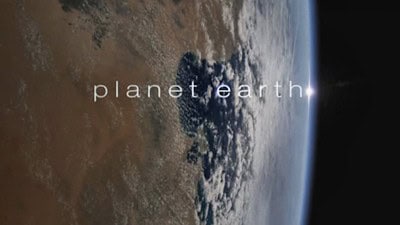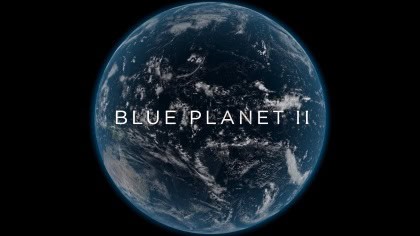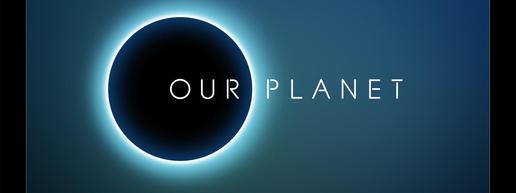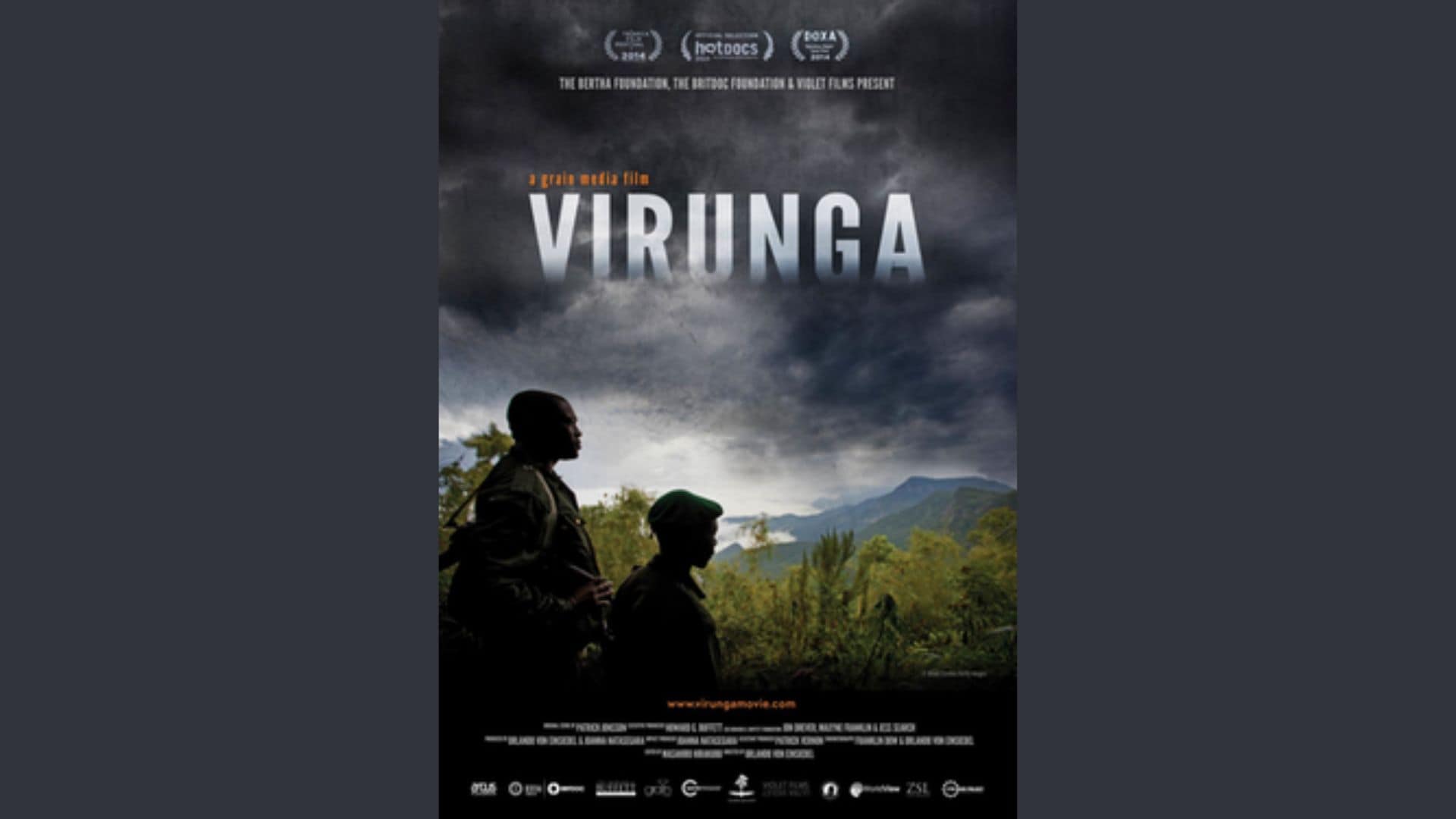The world of wildlife filmmaking has evolved dramatically over the decades, from grainy black-and-white footage to breathtaking 8K resolution that captures the minutest details of animal behavior. These masterpieces of documentary filmmaking don’t just entertain—they educate, inspire, and often change how we perceive the natural world. The best wildlife films transport viewers to remote corners of the planet, revealing intimate moments in animals’ lives that most humans would never otherwise witness. Through technological innovations, immense patience, and sometimes years of filming, these award-winning productions offer unparalleled glimpses into nature’s most guarded secrets. Whether showcasing the hunting techniques of ocean predators, the complex social lives of primates, or the bizarre mating rituals of birds of paradise, these films expand our understanding of the incredible diversity of life on Earth while emphasizing the fragility of these ecosystems in the face of human impact.
The Evolution of Wildlife Filmmaking

Wildlife filmmaking has transformed dramatically since its earliest days. In the 1920s and 1930s, pioneering nature filmmakers like Cherry Kearton and Martin and Osa Johnson ventured into remote locations with bulky equipment to capture the first moving images of wild animals in their natural habitats. These early films, while groundbreaking, were limited by technology and often staged. The 1950s and 1960s saw significant advancements with the work of pioneers like Jacques Cousteau, who developed underwater filming techniques, and the establishment of the BBC Natural History Unit in 1957, which would become a cornerstone of wildlife documentary production. By the 1970s and 1980s, improved camera technology and field techniques allowed filmmakers to capture increasingly authentic wildlife behavior. The digital revolution of the 21st century brought high-definition cameras, drones, remote camera traps, and sophisticated time-lapse photography, enabling filmmakers to document animal behavior previously impossible to record. Today’s wildlife films utilize 8K cameras, thermal imaging, stabilized gimbals, and underwater housings to create immersive experiences that bring viewers closer to wildlife than ever before, while maintaining strict ethical guidelines to minimize disturbance to the animals being filmed.
Planet Earth: The Gold Standard of Wildlife Documentaries

BBC’s “Planet Earth” series, first released in 2006 and followed by “Planet Earth II” in 2016, revolutionized wildlife filmmaking and set a new benchmark for the genre. Narrated by Sir David Attenborough, this landmark series took five years to film across 64 countries, employing groundbreaking techniques such as aerial photography from helicopters equipped with stabilized cameras. The series won multiple Emmy and BAFTA awards, with its snow leopard footage in “Mountains” episode representing the first-ever wild filming of these elusive cats. “Planet Earth II” pushed boundaries even further with ultra-high-definition technology and innovative camera techniques, including the use of drones and remote camera traps. The “Cities” episode, exploring wildlife adaptation to urban environments, and the dramatic marine iguana chase sequence in the “Islands” episode (which went viral online) showcase the series’ ability to create nail-biting narratives from natural phenomena. What sets these documentaries apart is not just their technical brilliance but their holistic approach to ecosystems, examining how geography, climate, and animal behavior intertwine to create Earth’s diverse biomes. The immersive cinematography, coupled with Attenborough’s insightful narration and Hans Zimmer’s compelling score in the second series, creates an emotional connection between viewers and wildlife that has inspired conservation efforts worldwide.
My Octopus Teacher: An Intimate Underwater Relationship

“My Octopus Teacher” broke new ground in wildlife filmmaking when it was released in 2020, going on to win the Academy Award for Best Documentary Feature in 2021. This remarkable film chronicles the year-long relationship between filmmaker Craig Foster and a wild common octopus in a South African kelp forest. Unlike traditional wildlife documentaries that maintain an objective distance, Foster’s approach was deeply personal—he swam daily without a wetsuit in the frigid Atlantic waters, gradually earning the trust of the octopus who began to recognize him and allow him into her world. The film’s unprecedented intimacy reveals extraordinary octopus behaviors rarely documented before, including her problem-solving abilities, playfulness, and defense mechanisms against predators. What makes this documentary particularly moving is how it tracks the full life cycle of the octopus through to her natural death after reproduction, creating a narrative arc more emotionally resonant than most wildlife films. The cinematography, captured primarily by Foster himself while free-diving, offers stunning visuals of the kelp forest ecosystem. Beyond its technical achievements, “My Octopus Teacher” resonated with audiences worldwide because it explored themes of human connection with the natural world, healing through nature, and the intelligence of an often-underappreciated invertebrate, challenging viewers to reconsider their relationships with non-human animals.
The Remarkable Technology Behind Blue Planet II

BBC’s “Blue Planet II” (2017) represents one of the most technologically ambitious wildlife documentary projects ever undertaken, employing cutting-edge equipment and techniques to reveal previously unseen ocean behaviors. The production team spent over four years filming across every ocean, completing 125 expeditions to capture the series’ breathtaking footage. Among the technological innovations was the development of specialized camera systems like the “tow cam,” which could film alongside swimming dolphins at their speed, and “rebreather” diving equipment that allowed underwater cameramen to remain submerged for hours without releasing telltale bubbles that might disturb marine life. For deep-sea sequences, the team deployed submersibles capable of descending 1,000 meters while housing broadcast-quality cameras. Perhaps most revolutionary was the use of ultra-high-definition underwater probe cameras that could capture microscopic marine organisms in unprecedented detail. The series also employed low-light cameras to film bioluminescent displays and predation events in the ocean’s twilight zone. The “Coral Reefs” episode featured time-lapse photography that compressed months of coral bleaching into just seconds, powerfully illustrating the impact of rising ocean temperatures. This technological mastery allowed the filmmakers to document numerous marine behaviors never before captured on film, including tool use by tuskfish, cooperative hunting between coral groupers and octopuses, and the spectacular phenomenon of mobula rays turning the ocean surface into a “boiling sea” during mass feeding events.
March of the Penguins: A Triumph of Endurance Filmmaking

“March of the Penguins” (2005) captured the world’s attention and earned an Academy Award for Best Documentary Feature through its intimate portrayal of Emperor penguins’ breeding cycle in Antarctica. Director Luc Jacquet and his crew demonstrated extraordinary commitment, enduring temperatures reaching -80°F (-62°C) and winds exceeding 100 mph (160 km/h) while filming for over 13 months at the French scientific base of Dumont d’Urville in Antarctica. The filmmakers used specially designed camera equipment that could function in extreme cold while maintaining battery life, and developed techniques to move across the ice without disturbing the penguins’ natural behaviors. The documentary’s narrative power comes from its focus on the penguins’ remarkable 70-mile journey from the ocean to their breeding grounds, followed by their extraordinary parenting efforts—males incubating eggs in winter darkness while balancing them on their feet, enduring months without food as temperatures plummet. Originally released in French with animal “voices,” the English version featured Morgan Freeman’s warm narration, which helped humanize the penguins’ struggle without anthropomorphizing them excessively. The film’s unflinching portrayal of the harsh realities of Antarctic life—including the death of chicks and adults—provided an honest window into natural selection while still creating a deeply emotional experience. “March of the Penguins” influenced wildlife filmmaking by demonstrating that focusing intensively on a single species could create a compelling narrative arc with universal appeal, making complex ecological concepts accessible to mainstream audiences.
Our Planet: Conservation Messaging in Premium Wildlife Films

Netflix’s “Our Planet” (2019), narrated by Sir David Attenborough, marked a significant evolution in wildlife documentary storytelling by explicitly integrating conservation messages throughout its spectacular footage. Unlike earlier nature series that sometimes relegated environmental concerns to the final episode or supplementary materials, “Our Planet” wove the reality of human impact directly into the narrative of each episode. The series was created in partnership with the World Wildlife Fund and involved over 600 crew members filming in 50 countries across all continents. What distinguishes “Our Planet” is its unflinching approach to ecological crisis—viewers witness walruses plummeting from cliffs due to diminished sea ice, coral reefs bleaching in accelerated time-lapse, and the transformation of rainforests into agricultural land. The production team employed cutting-edge technology, including 4K drone cinematography and remote camera systems, to capture both the planet’s remaining wilderness and its degradation. The “Frozen Worlds” episode sparked particular public reaction with its dramatic footage of mass walrus deaths, generating both controversy and increased awareness about climate change impacts. Critically acclaimed and winning two Emmy Awards, “Our Planet” demonstrated that conservation messaging need not diminish entertainment value or audience engagement. The series was complemented by an extensive online platform providing action steps for viewers and educational resources, establishing a new template for how premium wildlife documentaries can simultaneously entertain, educate, and inspire conservation action without compromising production quality or viewer experience.
Blackfish: The Documentary That Changed an Industry

“Blackfish” (2013), directed by Gabriela Cowperthwaite, stands as one of the most influential wildlife documentaries ever made due to its tangible impact on the marine park industry. This powerful film examines the controversial history of capturing and keeping orcas in captivity, focusing primarily on Tilikum, a bull orca involved in the deaths of three people, including SeaWorld trainer Dawn Brancheau in 2010. Unlike traditional wildlife documentaries celebrating animal behavior in natural habitats, “Blackfish” employed investigative journalism techniques, incorporating shocking footage of orca captures and attacks alongside interviews with former SeaWorld trainers, whale experts, and eyewitnesses. The documentary meticulously builds its case that orcas—highly intelligent, social mammals with complex family structures in the wild—suffer profound psychological trauma in captivity, leading to abnormal and potentially dangerous behaviors. Following its premiere at Sundance and subsequent release on CNN and Netflix, “Blackfish” reached millions of viewers and ignited unprecedented public outrage. The “Blackfish Effect” resulted in measurable consequences for SeaWorld: attendance dropped substantially, stock prices plummeted by over 60%, and the company eventually announced the end of its orca breeding program and theatrical orca shows. Beyond these corporate impacts, the film sparked legislative changes, including the California Orca Welfare and Safety Act prohibiting orca breeding and theatrical performances. “Blackfish” demonstrated how wildlife documentaries can transcend entertainment to become powerful agents of social change through compelling storytelling and strategic distribution.
The Cove: Wildlife Filmmaking as Activism

“The Cove” (2009), which won the Academy Award for Best Documentary Feature, redefined the boundaries of wildlife filmmaking by blending documentation with direct activism. Director Louie Psihoyos and a team including former dolphin trainer Ric O’Barry orchestrated a covert operation to film the secretive dolphin drive hunting in Taiji, Japan, where dolphins are corralled into a hidden cove, some selected for marine parks while others are slaughtered for meat. Facing intense local opposition and potential legal consequences, the filmmakers employed counterintelligence tactics including thermal cameras, underwater microphones, and cameras disguised as rocks (created by Industrial Light & Magic) to capture footage that local authorities actively prevented from being documented. The resulting film employs techniques from spy thrillers and heist movies, creating tension and urgency rarely seen in wildlife documentaries. “The Cove” stands apart from traditional nature films by explicitly advocating for policy change, presenting graphic footage of dolphin slaughter to shock viewers into action, and directly confronting those responsible. The film’s impact was substantial—it raised international awareness about Taiji’s dolphin hunts, prompted diplomatic discussions between the US and Japan, and contributed to reductions in demand for dolphin meat after the film revealed its high mercury content. While some critics questioned its Western perspective on Japanese cultural practices, “The Cove” demonstrated that wildlife documentaries could function effectively as advocacy tools while maintaining cinematographic excellence. Its approach has influenced subsequent activist-oriented wildlife films that aim not just to document nature but to mobilize audiences to protect it.
Racing Extinction: Innovative Visual Storytelling for Conservation

“Racing Extinction” (2015), directed by Louie Psihoyos (of “The Cove” fame), pioneered new approaches to conservation filmmaking by combining breathtaking wildlife cinematography with technological spectacle to illuminate the global extinction crisis. The documentary employs a multifaceted approach, following undercover operations exposing the illegal wildlife trade alongside cutting-edge techniques for visualizing normally invisible environmental threats. One of the film’s most innovative aspects was its use of a custom-built high-definition camera capable of capturing carbon dioxide emissions and methane gas as visible plumes, making abstract concepts like greenhouse gas emissions visually concrete for viewers. The production team also developed specialized equipment to film bioluminescent creatures and high-speed cameras to capture the precise moment of animal cell death. The documentary culminated in an unprecedented public awareness event where the filmmakers projected endangered species images onto the United Nations Headquarters and Empire State Building, reaching an estimated audience of 939 million people worldwide through news coverage. “Racing Extinction” structured its narrative around the concept that humans are causing the sixth mass extinction event in Earth’s history, presenting scientific evidence while emphasizing that technological solutions exist if implemented quickly. Unlike documentaries focusing solely on natural history, “Racing Extinction” devoted significant screen time to profiling innovators developing renewable energy, sustainable agriculture, and market-based conservation initiatives. By balancing disturbing content about species loss with hopeful examples of solutions, the film created an emotional arc designed to inspire action rather than despair, establishing a template for solution-oriented conservation documentaries that has influenced subsequent environmental filmmaking.
Virunga: Wildlife Conservation in Conflict Zones

“Virunga” (2014), executive produced by Leonardo DiCaprio and nominated for an Academy Award, broke new ground in wildlife documentary filmmaking by exploring the interconnection between conservation, armed conflict, corporate interests, and human courage. Set in Virunga National Park in the Democratic Republic of Congo, the film documents the rangers’ efforts to protect the world’s last mountain gorillas amidst civil war and encroachment by the British oil company SOCO International. Director Orlando von Einsiedel created a documentary that functions simultaneously as nature film, investigative exposé, and war reporting. Unlike traditional wildlife documentaries, “Virunga” places equal emphasis on the gorillas and the humans risking their lives to protect them, particularly ranger André Bauma, whose profound bond with orphaned gorillas provides the film’s emotional core. The production involved substantial physical risk, with filming continuing during active M23 rebel fighting, and featured undercover footage obtained by French journalist Mélanie Gouby that exposed apparent corruption by SOCO representatives. The film’s unflinching portrayal of ranger casualties—over 150 Virunga rangers have been killed in the line of duty since 1996—illustrates the human cost of wildlife protection in conflict areas. “Virunga” had tangible impact beyond cinema, contributing to international pressure that led SOCO to withdraw from the park, though controversy around potential continued involvement persisted. By interweaving wildlife conservation with political economy, armed conflict, and neocolonial resource extraction, “Virunga” expanded the scope of what wildlife documentaries could address. Its success demonstrated audience willingness to engage with complex portrayals of conservation that acknowledge the social, political, and economic contexts in which wildlife protection occurs, influencing subsequent films that similarly contextualize conservation within broader human systems.
The Elephant Queen: Crafting Compelling Wildlife Narratives

“The Elephant Queen” (2019), directed by Victoria Stone and Mark Deeble, exemplifies the power of character-driven storytelling in wildlife filmmaking through its intimate portrait of an elephant matriarch named Athena and her herd. The filmmakers spent four years living in the Kenyan bush to document the elephants’ journey for water during drought, creating unprecedented trust and access that allowed them to capture behaviors rarely filmed, including elephant birth and mourning rituals. Unlike documentaries attempting to cover entire ecosystems or multiple species, “The Elephant Queen” focuses intensively on a single elephant family, allowing viewers to form deep emotional connections with individual animals whose distinct personalities emerge through careful observation. The film’s narrative arc follows classical storytelling structure—introducing characters, establishing their goals (finding water), presenting obstacles (predators, drought), and building toward climactic moments of triumph and loss. While maintaining scientific accuracy, the production employs cinematic techniques more common to fiction films, including character-driven editing
- The Coldest Town in America—And How People Survive There - August 9, 2025
- How Some Birds “Steal” Parenting Duties From Others - August 9, 2025
- 12 Deep-Sea Creatures You Won’t Believe Exist - August 9, 2025

